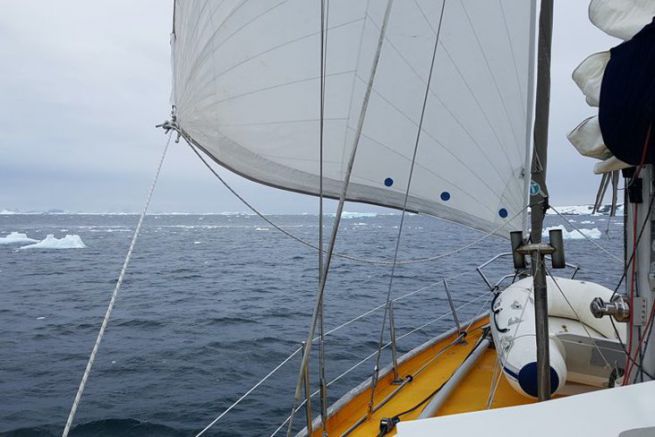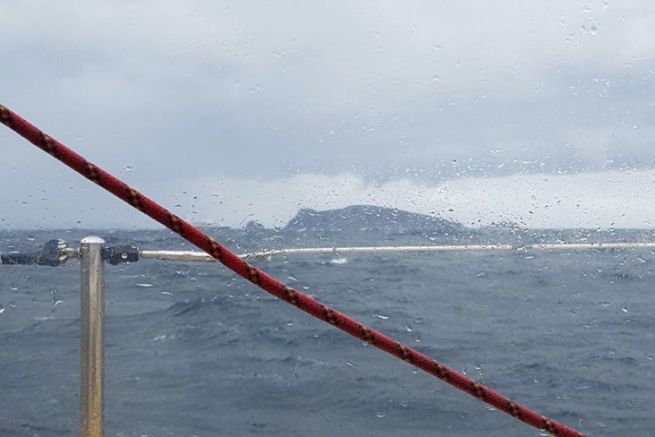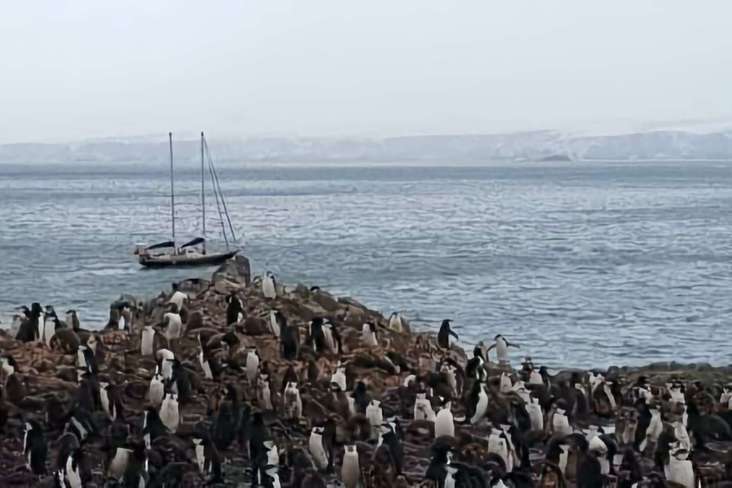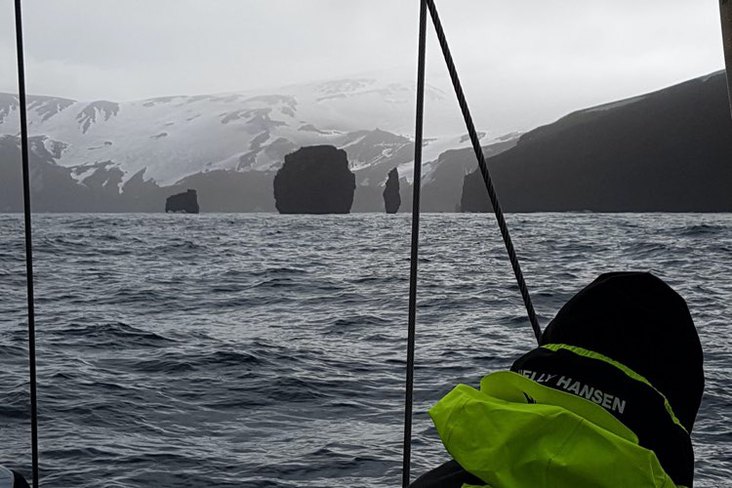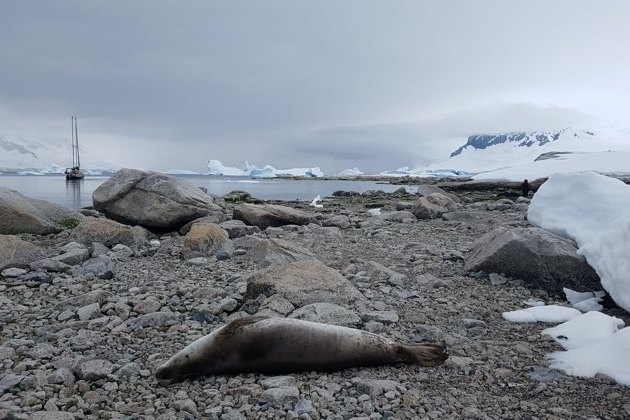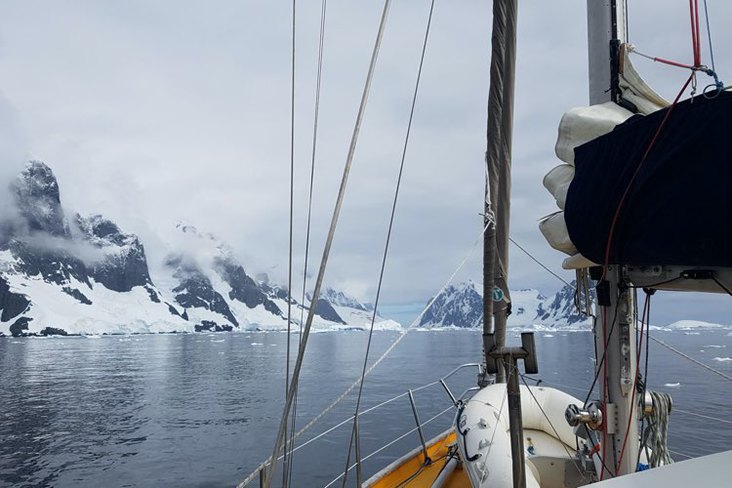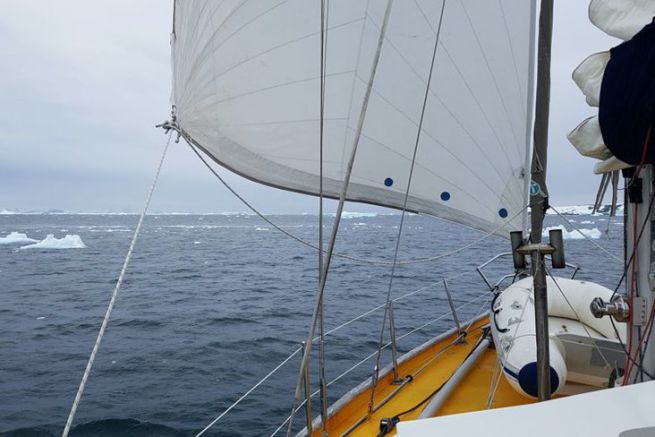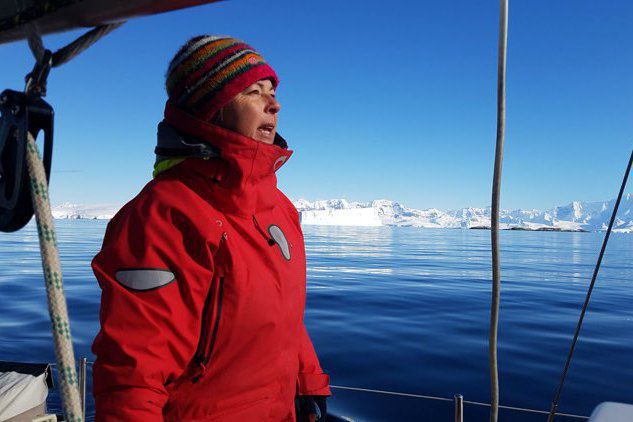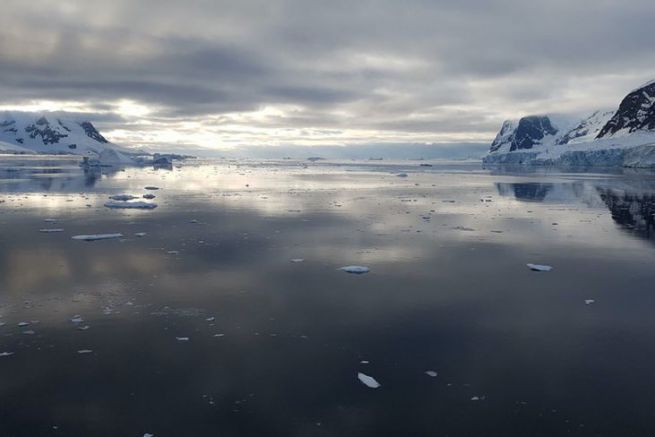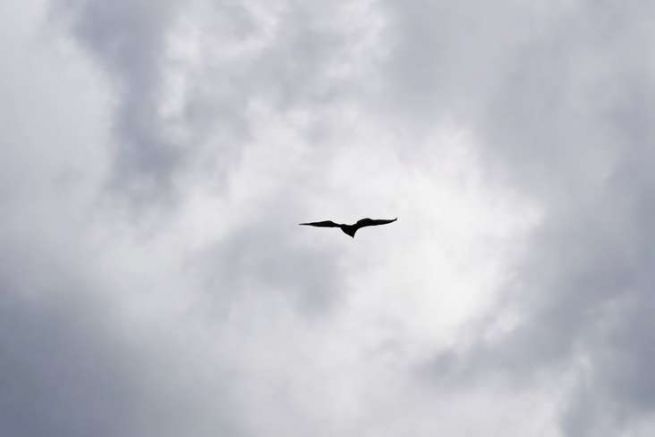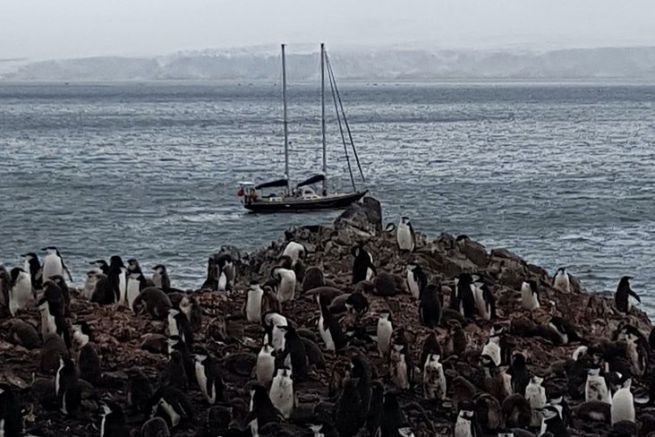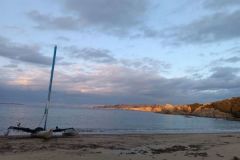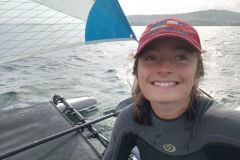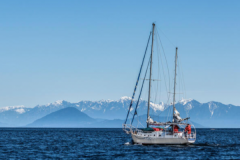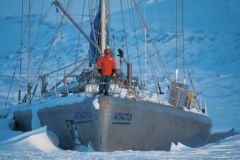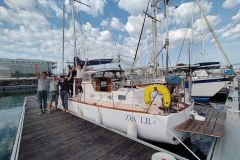After visiting the English base at Loctroy.. The crew of the 15-metre steel schooner with Dominique and Carole on board is approaching a Ukrainian base. But before tasting the local vodka, some technical problems have to be solved.
Still big problems with the engine
We have a rendezvous about 30 miles south, at the Ukrainian base of Vernadsky, with Le Boulard, a friend ship that has just arrived in Antarctica and that the captain had contacted by Iridium to bring us from Ushuaia spare filters, an electric feeding pump and WD-40. We start the engine, but it immediately stalls again. Without a replacement filter, without an electric booster pump, my repair options are limited. To make matters worse, we run out of WD-40. Once again, Neptune is with us. Without endangering ourselves, the engine eventually restarts.
After the radiant day in La Salpetrière, it is very cold today with snow and mist. This time we came across L'Austral, another cruise ship from the Ponant company, and it was freshly baked raisin bread brought to us by the expedition leaders in their fast zodiac off Peterman Island. There's really nothing like meeting a French liner in Antarctic waters!
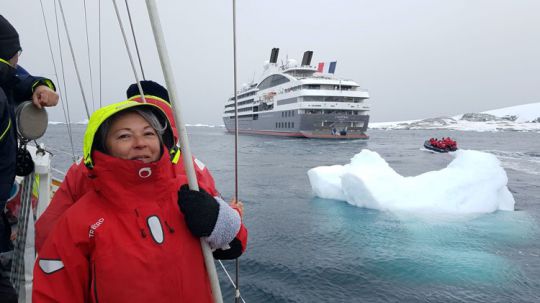
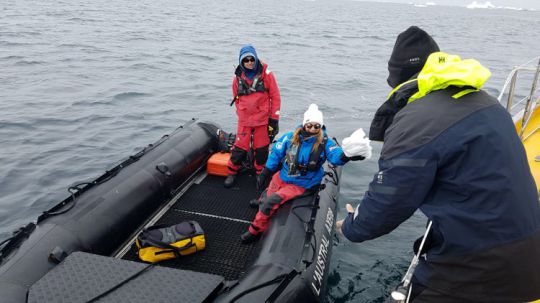
Vodka in the Ukrainian base
Unlike Lockroy and Videla, Vernadsky's base is open all year round. The Ukrainian scientists who run it are very welcoming. After working hours, they have a very friendly bar where "home-made" vodka flows... which invigorates the transi crew, because it is now very cold and snowing.
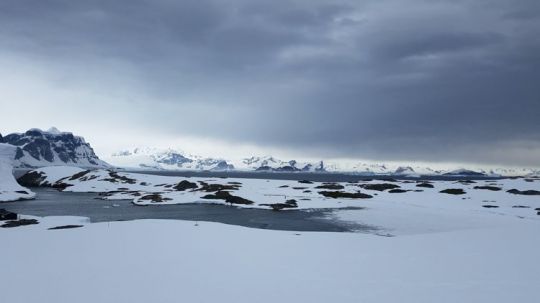
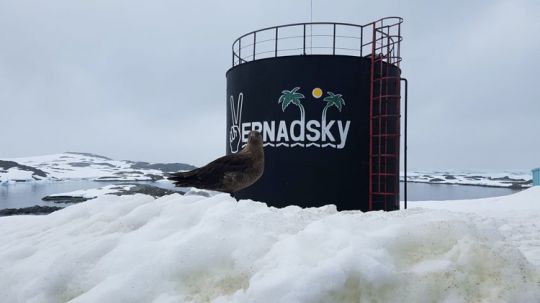
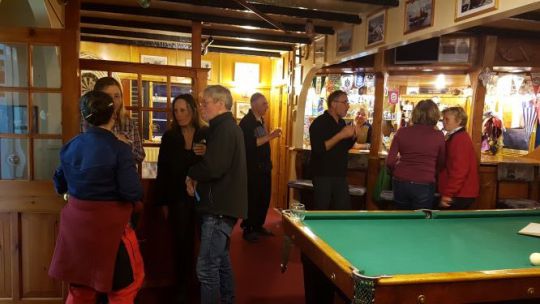
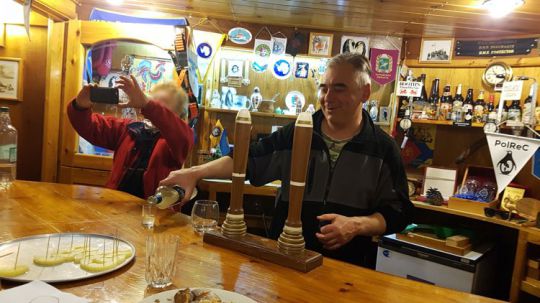
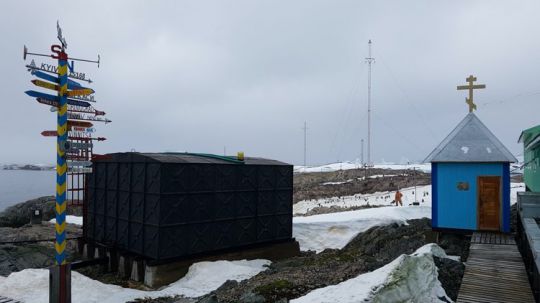
Avoid iceberg drifting
We are anchored in a narrow channel where, with the tides and the breeze, the large chunks of ice are constantly coming and going, forcing us to make evasive manoeuvres (using the poles as gaffes) or to free the blocks that get caught in our moorings ashore. Day and night (especially at night!), we must quickly jump into our overalls and boots when the watchman calls to the rescue.
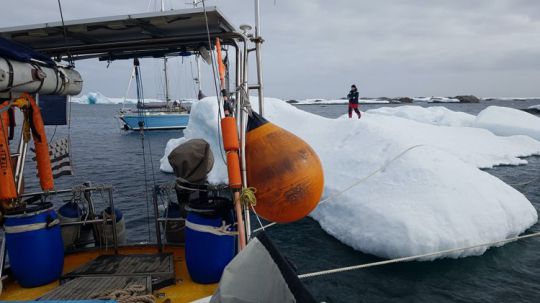
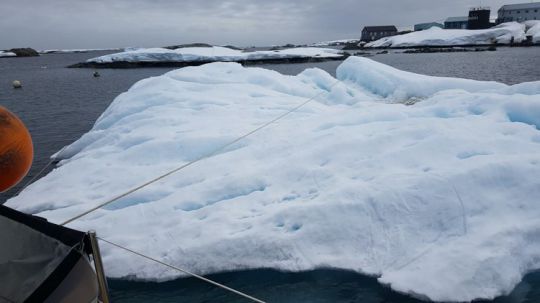
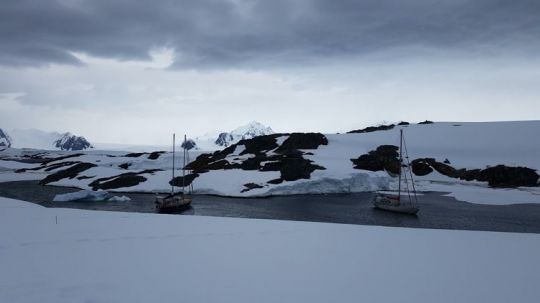
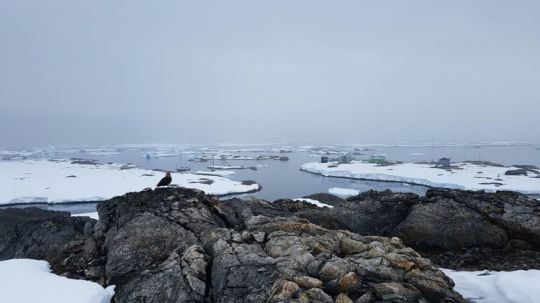
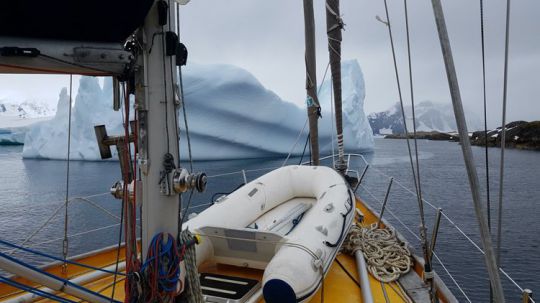
One morning, a piece of shelf shakes the whole boat by the tidal current alone. This perfectly flat piece of ice, about 20 m x 20 m and 50 cm thick, weighs more than 200 tons and collides with the 20 tons of our boat in an unequal battle. It must be let through at all costs. Luckily there is not a breath of wind, otherwise the boat and all its anchorage on land would be swept away like a straw feast.
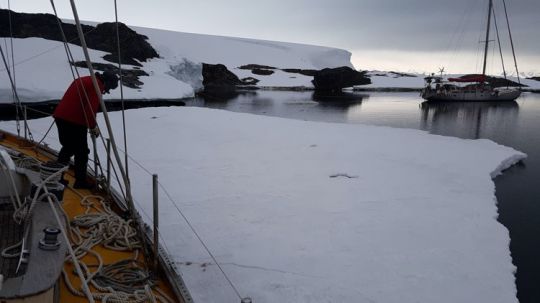
A poorly maintained engine
The engine keeps playing tricks on us. It starts and stalls in a hurry. Beyond the problem of clogged filters, there is probably a problem with the air intake. But how can you find your way around a diesel fuel system made of rigid and flexible hoses of different diameters (apparently original - 43 years old - therefore porous), forced one on top of the other or on the wrong diameter connection ends?
Finally, Le Boulard joins us and brings us 2 RACOR filters (10 microns) and the 12 V feeding pump. I install the booster pump upstream of the fuel system, with the idea of pressurizing the whole thing to eliminate the air intake problem. It works much better. You no longer have to keep a crew member straddling the generator to manually activate the pump to keep it running (see episode 2) . The engine, too, starts, but after 2 hours the vacuum gauge of the RACOR in which I installed one of the new filters indicates almost "15", a nearly clogged filter. Our diesel must be extremely dirty... And in the last minute haste, Le Boulard couldn't get WD-40. The captain takes a look at the few boats at anchor, but no one wants to part with his WD-40.
Too much ice to continue south
Our initial project was to try to reach Baie Marguerite, about 100 miles further south. But a Belgian boat with whom we share the Vernadsky anchorage returned after 24 hours announcing the impassable passage, saturated with ice. Worse still, this steel boat has even made a hole in her hull by hitting a large ice floe. Fortunately, it has diving equipment adapted to the icy waters ("dry suit") and they can control this waterway with epoxy putty.
It is now mid-February and we will have to take the northern route again before the arrival of winter in early March. We'll be passing through Pléneau again where, in the middle of the night, with a wind set at 25/30 knots, we'll have to make a catastrophic manoeuvre to catch up with the boat, one of whose moorings on land has ripped through its rock.
A truly unsuitable electric outboard motor..
The next day, we leave to explore the rockery a good mile from the anchorage. The weather is perfectly calm, but I'm not comfortable with the low autonomy of the electric outboard. In absolutely calm weather, the distance we have to cover - 2 miles round trip - will take the load off the battery, but if the wind and swell pick up on the way back, we'll never be able to get back on board. Continuous risk management becomes second nature when you live on board a boat for a long time, but I have the feeling that Carole and I are the only ones who think like that on board.
Our next stop is Port Charcot, where Charcot aboard the Pourquoi Pas wintered. We hardly find an anchorage there, as it is very deep, and we spend the night playing hide-and-seek with very big icebergs that keep targeting us. An exhausting night.
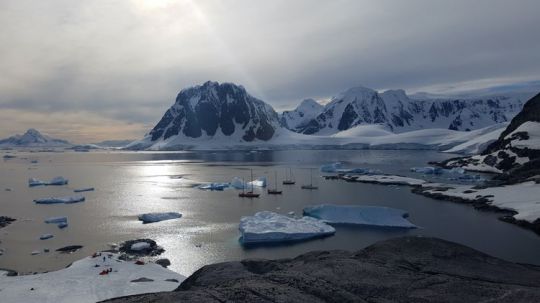
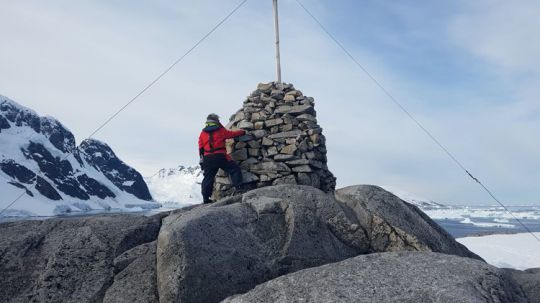
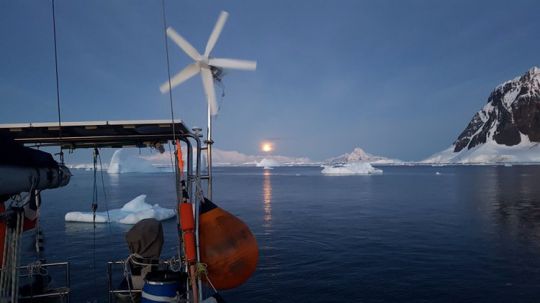
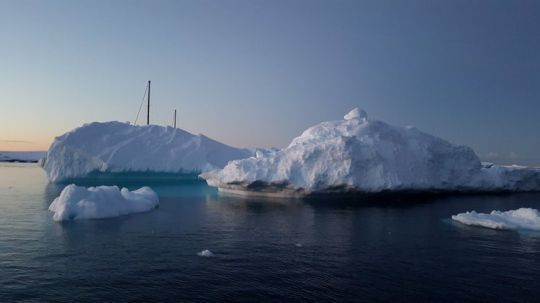
Leaving Port Charcot, the ascent of the Lemaire Canal is very tricky, as the canal is heavily loaded with ice. You have to try to make your way up thanks to the watchman's instructions, and here again, a thick steel hull is welcome to resist the violence of the shocks that stop the boat on itself at regular intervals. We spend one night again at Lockroy.
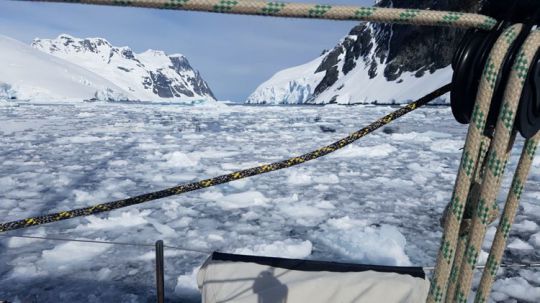
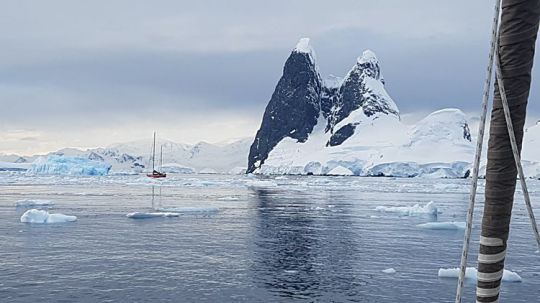
Ice and precarious anchorage
The next day, the captain decided to set course for Useful Island, about thirty miles from Lockroy, to find the boat Podorange, which could give us a bottle of gas and a RACOR filter. Long live Iridium which allows us to communicate by e-mail. How would we have done in the "pre-Iridium/Internet" era? So we go back up the Neumeyer Canal with its spectacular scenery.
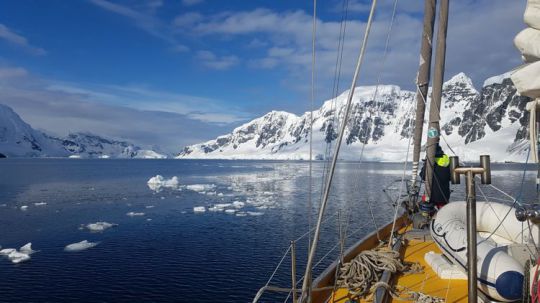
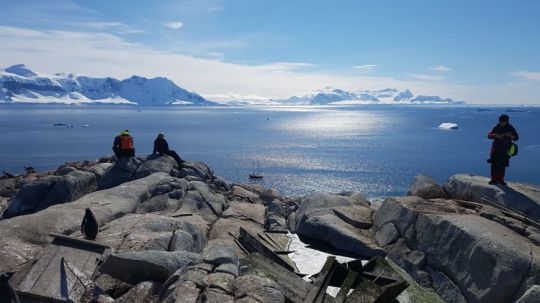
Useful's anchorage is once again precarious, as is quite common in Antarctica when you have to rely on your anchor alone and when the configuration of the place does not allow you to put moorings ashore. The depth sounder indicates 18m on the bow and 60m at the stern and we only have 50m of chain... But the weather is perfectly calm and it's holding, even if we have to keep watch all night long. Thanks Neptune!
To be continued...
